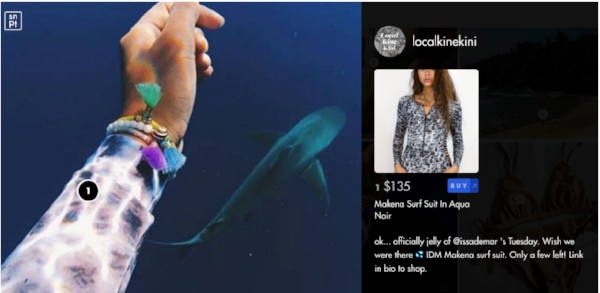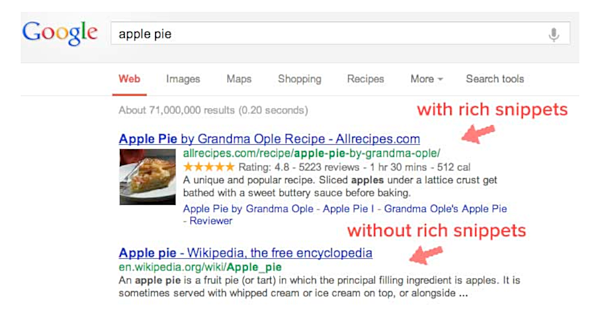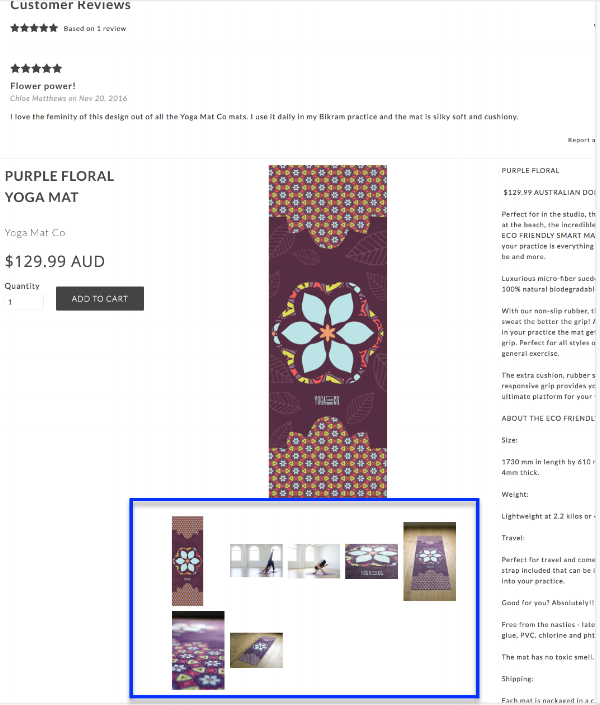
30 Of The Best Growth Hacking Ideas for Your Startup
In 2010, Sean Ellis coined the phrase “growth hacker.” He worked with a number of startups in their early stages, such as Dropbox, but when he needed to move on and find his replacement, he ran into some trouble.
The Quicksprout blog details what Sean was discovering:
“A traditional marketer has a very broad focus, and while their skill set is extremely valuable, it is not as necessary early in a startup’s life. In the first phase of a startup, you don’t need someone to “build and manage a marketing team” or “manage outside vendors” or even “establish a strategic marketing plan to achieve corporate objectives” or many of the other things that marketers are tasked with doing. Early in a startup, you need one thing. Growth.”
The Low Down on Growth Hacking
Even though the term has become popular, there is still a lot of misunderstanding when it comes to what a growth hacker actually does for a company. The term growth hacker itself is a highly competitive search term with numerous variables in Google. Leading down the path of even more confusion!

So what can a little growth hacking or a self-described growth hacker do for your business? Should you hire a tried and true marketer or do you need to hire a growth hacker?
To answer this, you have to decide what your goals are and where you are in your business. Do you need to scale fast, or do you need to establish long-term plans? Can you implement any of these tactics yourself? Or do you need to focus on product-market fit first?
There is definitely an overlap of skillsets between a “growth hacker” and a marketer but the key difference is that laser-focused vision on nothing else but growing the user base. So determining where you are, will determine who you need.
The Seven Pillars of Growth Hacking
According to Chris Out on RockBoost, there are seven pillars of true growth hacking that include the following:
- Achieving the growth mindset
- Having the right team
- Measuring growth
- Listening to your market
- Using results from your market research
- Using the correct traction channels efficiently
- Understanding the key to optimization is testing
Those pillars assist with the process of successful growth hacking — constant testing and analyzing. Along with the constant testing and analyzing, comes plenty of failures and that’s okay! Part of being a successful growth hacker is also being good at failing. As long as you learn from that failure and make the necessary adjustments to avoid the same failure again.
Do You Need Growth Hacking?
So if you’re reading this and thinking, “Yes, I need some growth hacking!” Let’s take a look at your options. Could you or your team experiment with a few tried and true hacks? How about some that we’ve tested ourselves and that we’ve collected for you?!
We will continue to add to this list when beneficial and awesome growth hack products and ideas pop into the market space. Continue to check back when you’re looking for fresh ideas!
We have tried many of the methods below — one of our favorites being updating a popular blog post to make it even better for a major boost in SEO.
Throughout the list below, we will sprinkle in how we used it for our clients and the results we received.
Here is the list of some of the growth hacking we’ve seen this year.
1. IMPROVE SEO BY USING “THE BIGFOOT STRATEGY.”
A web page that contains a large spread of rankings across many keywords is referred to as a “Bigfoot” page. The more keywords that you use on your page, the better your SEO/traffic.
How To:
Find related keywords that you can use on your Bigfoot page discovering other similar topics that relate to the root topic of your page. Use an LSIGraph tool to get ideas.
2. CREATE AN ACADEMY TO BUILD AN EARLY AUDIENCE WITH THIS IDEA.
Want early growth and success in inbound marketing? Create an academy, not a blog! The main difference is an academy has a beginning (matriculation) and end (graduations).
Because it’s a class, you can’t promote your product, but eventually, academy graduates will want to know how to apply what they’ve learned, and if you’re smart, your product will be the answer to that question.
Along the way, you will build an evergreen content strategy, an email list (hello, micro-conversions), and you can easily repurpose and distribute the academy courses elsewhere.
How To:
Make it iterative so you don’t overwhelm yourself. Work on content for your first course piece-by-piece and make sure to connect the dots between your course and your product with what you teach.
3. RETARGET USERS WHO’VE TAKEN DESIRABLE ACTIONS ON YOUR SITE.
Remarketing lists for search ads allow Google AdWords users to customize search network campaigns to target users who have completed the desired action on their website. This targeting can allow advertisers to target a specific audience already familiar with the brand while leveraging budget to maximize ROAS.
How To:
Here are some remarketing tactics:
- Increase bids for users that have visited your site an optimal number of times before purchase. Check out the path length report in GA.
- Create an audience list based on a specific date such as “Black Friday” shoppers.
- Increase bids for people who have completed other actions on your site but not yet made a purchase.
- Target people who spend over your average order value. Create this list in the enhanced e-commerce section of GA.
- Customize Search Network targeting via Customer Match. Customer Match allows advertisers to now create and target a custom user audience simply by uploading a list of email addresses.
4. USE PPC TO DRIVE TRAFFIC AND LINKS FOR SEO.
SEO relies mainly on a solid content strategy. But it takes months to see the results of your work. Use PPC to fill the gaps while you’re waiting for Google to notice you. PPC is an easy way to promote your content to a large audience who may have to wait months to see it organically otherwise.
With Adwords you can target users based on browsing activities and on Facebook ads, you can target job titles and interests.
How To:
Instead of link building up front, use ads to show users your content, and if it’s good (it better be) they will naturally share it with their audience, helping you to build those links, increasing your SEO and domain authority faster!
5. 30 WAYS TO EXPERIMENT WITH ACQUISITION, PRODUCT, AND VIRALITY TO GET MORE GROWTH.
As mentioned earlier, growth hacking is all about experimenting with different tactics and moving quickly to get the data you need to iterate on what works. In this hack, we try experiments with acquisition to draw customers’ attention and drive them to your product, once they view the product, have a plan in place for having them develop a habit for your product, which then brings us to the last tactic of virality, where the customer loves your product so much they become an advocate and share their love of your product with everyone.
How To:
Set-up the acquisition, product, and virality strategy by using segmented email lists, build your guest post network, provoke product envy, offer content upgrades, replace your review button with a share button, incentive your referrals, find your viral growth loop, send personalized push notifications, purchase Facebook ads, as well as many other ideas.
6. HOW TO OPTIMIZE YOUTUBE TO SIGNIFICANTLY INCREASE VIEWS.
Instead of constantly creating new videos, which can be time-consuming and costly, consider recycling video content you have used in the past. Even if it’s years old, you can pick a couple of videos and optimize them to get insane amount of views.
How To:
Pick a video you already have created, create a tracking method to keep a tally of your views and data, conduct your keyword research, optimize the video by changing the headline, inserting keywords, and branding it, and finally, track and view your results.
7. INCLUDE MORE CTAS POINTING TO THE SAME LOCATION TO INCREASE CTR.

We discussed this on our blog when diving into content marketing mistakes you’re still making. Call to actions let your site visitors know what you want them to do on the page. A lot of times, these will be a great variable to test once you have a significant amount of traffic. One thing we know for sure, increase the CTA’s, and increase the chance for clicks. Test color, shape and placement of one or two things at a time, and you can get some actionable data about what your visitors respond to.
How To:
Use Optimizely and run an A/B Test experiment.
8. USE RECOGNIZABLE IMAGES IN FACEBOOK ADS.

The key to Facebook ads is having a stunning visual, compelling copy and a brand story. With hundreds of images and copy flooding a person’s newsfeed a day, there are some subtle ways to draw the eye.
How To:
Draw attention with an engaging storyline, use dark color schemes, use charts and graphs, always use a CTA, and mix up your font style and sizes. These will drive more eyes to your ad, therefore, more engagement.
9. CLOSE MORE DEALS WITH THESE EMAIL TEMPLATES, AND SCRIPTS WITH THIS BUNDLE.
Get a startup sales resource bundle to assist you with your growth hacking. This one has nine email templates proven to increase open and response rates, three checklists to guide you through setting up a sales process, two sales scripts to help craft the right pitch, and more.
You are bound to use at least one of these:
- 8 CRM-ready email templates
- a fill-in-the-blanks sales script template
- an objection management document
- a sales interview question matrix
- a SaaS churn calculator
- a sales hiring referral email template
- a product demo checklist
- a 4-week sales on-boarding schedule
- a list of 42 powerful sales questions to help you close more deals
- a meeting cost calculator
- a sales hiring checklist
- a sales call review checklist
How To:
Download this bundle and put the templates, checklists, and scripts to use. This is a solid foundation if you don’t know where to start! Customize each one with your company’s information and adjust the process once you get the hang of it.
10. CLOSE DEALS WITH THE CONSULTATIVE SELLING METHOD.
More sales professionals are taking a different approach to selling their products — a strategic approach. Having a strategic approach finds sneaky ways around simply telling (or yelling) at your client to purchase what you’re selling.
How To:
Establish rapport with your clients, don’t shove your products down their throat, and try out the different strategic methods such as the following:
- Consultative selling method — you’re crafting compelling solutions for your client’s current needs. You’re inspiring them with your insight and a solution to their problem. Put on your hero hat with this one.
- Parent method — you want to be firm but also empathetic to the client. You’re the one in control, so take it in this situation.
- Competition comparison method — this one is when you essentially compare your prospective client with a current one who is doing better than them with your insight and using your product.
11. REACTIVATE SUBSCRIBERS WITH THE “HAPPY BIRTHDAY” HACK.
If you’re using MailChimp or other email newsletter platforms, this growth hack is nothing, if not original! Whether you have 100 subscribers or 100,000 subscribers, address if these subscribers are benefiting you and even opening your newsletter. There is no benefit to having a large mailing list that doesn’t engage with your content and isn’t your target audience, to begin with. So this is where the Happy Birthday Hack comes into play:
“Inspired by The Birthday Paradox, an unintuitive (but statistically accurate) assumption that in a room of just 23 people, 2 folks are likely to share the same birthday. Similar logic could be applied to a group of email subscribers.
Theory:
IF we email a large group of unactivated subscribers “Happy Birthday,” THEN an unusually large # of them are likely to have recently had or will have a birthday.”
So does this actually work? Well, at the end of business, they directly tracked $3,386 in sales. Try it out for yourself to see what kind of results you receive.
How To:
Craft an email to your subscribers with the subject line “Happy [Belated] Birthday.” From there, personalize the email addressing their name. The copy should be something lighthearted and acknowledge that it may not even be their birthday (i.e. saying you had a glitch in your system and missed their birthday OR that you offer free discounts to people on their birthday). Don’t make it too “salesy”. If they respond, that’s when you respond to them with exclusive discount codes for them to use on your products.
12. NARROW DOWN YOUR FACEBOOK AUDIENCE FOR HIGHER SUCCESS.
CTRs can be confusing. In Quora, people claim that a Facebook ad click-through rate is anywhere between 0.1% to 24%. That’s a very wide and not super helpful range. At the end of the day, it doesn’t necessarily matter how many clicks you have if they aren’t purchasing your products.
How To:
Set-up your Facebook campaigns for multiple audiences and craft ads around their interests. Keep that ad copy short and sweet, use recognizable images, include numbers in your headlines, everyone loves a good emoji, and include a CTA.
13. UPDATE OLD CONTENT FOR A BUMP IN ORGANIC SEO.
Back in September, we updated our client ScaleGrid’s most popular blog post with a fresh perspective, new imagery, and updated statistics. This was a major boost to our organic results. Month-over-month, the acquisition and engagement metrics saw a nice lift!

How To: Update your content with fresh industry insights, add more numbers to your list, include an infographic version of your post at the end.
14. PUT YOUR TWITTER GROWTH ON AUTO-PILOT WITH MANAGEFLITTER.
ManageFlitter is one of my best kept secrets (not anymore) you can target your buyer personas and put the follow/unfollow on autopilot with remote management tools.
How To:
Setup follow rules for people that match your buyer personas and those who don’t follow back you can set an unfollow rule. I set a rule to unfollow the haters after about seven days. I also go in and manually engage with my new followers about once a week.


15. REWRITE OLD META TITLES TO BOOST ORGANIC CTR.
This is an experiment we are currently running for one of our clients. Since the old keyword stuffed meta title just won’t pass Google’s sniff test anymore. The new meta title will match the closer super-successful headline template — the list format, the emotional impact word choice, and the content type. For example: “30 Killer Growth Hacking Examples.” Wordstream claims this experiment increased CTR to 4.19 percent (up from 1 percent) and it ranked in position 5 (up from position 8).
How To:
Only change the meta title and nothing else to fit the template. Run an 8-week experiment where you re-optimize the meta title of three titles at a time. Choose three of your most important landing pages whose CTR you want to improve and track progress over those 8-weeks. If your CTR improves, scale the tactic to other low performing pages.
16. ANSWER QUESTIONS ON QUORA TO BRING IN THOUSANDS OF LEADS.
Answering questions on Quora, or better yet, answering one question really, really well, will build your niche authority. It will also help you build organic traffic to your site as well as building your email list fast.
How To:
Here’s what you should focus on:
- Find and answer the most relevant questions to your brand
- Optimize your bio with social validation, a relevant offer, links to other content
- Focus on finding the right questions – 7:1 ratio of followers to the number of answers provided, many bad answers, relevant to your bio offer, you can provide value
- Beautiful imagery helps you stand out
- Be authentic!
- Use great copywriting style – fonts, colors, emoticons, bullet points & numbering, positive!
- Avoid hard asks and clickbait
- Know what keywords you want to target
- Get featured in a major publication by going viral!
17. INCREASE SALES WITH PERSONALIZATION.

When you’re in sales, you’re constantly trying to predict what your customers will want next. Well, now you have assistance with those predictions. You should be sending personalized product recommendations to customers and then recapture abandon cart customers to make them convert.
How To:
First, connect your online store to MailChimp. From there, they will do the heavy lifting and analyze the purchase history of each customer to make data-driven predictions. Once the predictions are made, use this to create emails and newsletters tailored to each consumer group.
18. CREATE AN ABANDONED CART WORKFLOW IN MAILCHIMP
When you hop onto the backend of your company’s website and see users adding products into their shopping cart and then notice they didn’t end up following through with the purchase, that’s enough to break your spirit. There could be a number of reasons why they don’t follow through on that purchase. It’s your job to figure out why and get them to complete their transaction.
How To:
Start with an abandoned cart workflow that automatically sends them an email when they leave your products in their cart. The hope is that once they are reminded that they left your incredible products behind, they will come back and finish their purchase.
19. ALLOW USERS TO SHOP DIRECTLY FROM YOUR INSTAGRAM FEED.
We are in the process of testing this for one of our lifestyle brand clients. We made their Instagram feed completely shoppable, meaning every product featured also has a corresponding number which the user can roll over for a view of the product and its price and description.

How To:
Use Snappt to link your Instagram feed to your Shopify or other e-commerce platforms.
20. USE QUUU PROMOTE TO DISTRIBUTE AND PROMOTE YOUR CONTENT TO INFLUENCERS.
Getting your stuff in front of the right audience is tough. Quuu makes this so much easier and to some extent, puts social influencer outreach on autopilot. We use this to drive traffic and engagement for all our content marketing and social media clients as part of their packages with us. We’ve learned to harvest our low-hanging marketing fruit where we can. 😉 Every bit of non-commercial client content gets a little extra love from our team on Twitter, Facebook, and LinkedIn.
How To: Use Quuu promote to distribute your blog posts, case studies, or infographics across the social sphere to folks who sign up to curate content from your category.
21. SCHEDULE YOUR FACEBOOK LIVE TO INCREASE AUDIENCE SIZE.
It’s all about video. Facebook Live has become a popular method to attract new followers, connect with your community, and push valuable brand information to a large audience.
How To:
Tell fans you’re going to be broadcasting on Facebook Live ahead of time, go live when you have a strong connection, write a great description on the video before going live, include a CTA like asking viewers to subscribe to Live notifications, respond to commenters and mention their names when live, and broadcast for longer periods of time to increase your audience size.
22. USE STRUCTURED DATA TO INCREASE CTR.
Structured data, also known as rich snippets to the user, marks up your content so that Google can display “rich results” such as:

Markup the HTML with structured data and you will get these visually appealing search results. These types of results are known to improve click-through rates as much as 20-30% according to Moz.
From a user experience perspective, they provide benefits such as:
- Drawing a user’s attention to your relevant result.
- Providing instant information as related to their search query.
How To:
Insert the proper markup type into the content you wish to make eligible for a feature. Test your markup using the Structured Data Testing Tool.
23. USE SNAPCHAT GEOFILTERS TO EXPAND BRAND REACH

In-between the dog filter and the puking rainbow filter, brands are taking advantage of Snapchat Geofilters allow you to zoom in on a certain location and create a filter promoting your brand. If you’re trying to target a specific area, this is a great way to do so. But we don’t recommend creating a Snapchat Geofilter for just anything. They work well for large events, conferences, movie releases, local festivities, etc.
How To:
If you have a large event or product launch coming up that you want to have a Geofilter then you can create an On-Demand Geofilter. All you need to do is create an awesome design, map out the area you want this to appear, and then simply submit your idea.
24. USE PINTEREST ADVERTISING TO GROW SALES.
Get started with Pinterest’s newish ad platform and get a proven system you can follow to fast-track your way to quick results and measurable ROI.
How To:
- Sign up for Pinterest as a business (or convert your personal account into a business account).
- Go through and fill out your profile completely. (Add your logo, add a blurb about your business, connect your social accounts, etc.).
- Verify your website. Pinterest will give you a meta tag to place on the home page of your website – make sure you do this and then go back to Pinterest and verify that you have done so. You will not get access without this.
- Sign up for Pinterest Ads.
- Create boards related to your customers’ interests. Pin ten items to each board to start. Then go in and pin 15-20 pins per day (all on one board or spread across all your boards). Don’t pin more than 20x each day and do it between 6 p.m.-12 a.m. in your time zone. (NOTE: Most people use Pinterest at night. The goal is to get as many re-pins and followers as possible so that you get some engagement going on your account).
- Make sure to connect your social accounts and ask all of your friends to follow you as a way to kick off getting your initial followers. So get out there, get pinning, and get access to ads! I hope you have as much success with it as I have.
25. ADD INSTAGRAM PHOTOS TO POPULAR PRODUCT PAGES.
For our client YogaMatCo., we utilized these Insta-worthy photos that capture their beautiful yoga mats on their product pages. These images added to the product pages, adds another dimension to the product and hooks potential buyers to click the purchase button.

How To:
At the bottom of your product page, simply insert pictures of your products in use. This can be a slideshow, collage, etc. Anything that will draw the viewer’s eye and show them the versatility of your product.
26. SEND SEGMENTED PROMOTIONAL OFFER EMAIL TO ⬆ SALES.
If you know your customers well enough, usually you can categorize them by how they like to shop with you. So why don’t you use the same trick to segment your emails? Promotional emails can be used in multiple ways for a variety of customers. If you use email the right way with the right customers, you can drastically improve your conversion rates. According to BigCommerce, price decrease is the most successful email segment, with a 1.04% conversion rate and a 9.68% click-to-conversion rate. Low inventory falls in second place, triggering the psychological impulse of scarcity, with .55% conversion rate and a 7.37% click-to-conversion rate. New merchandise emails have a good click-to-conversion rate (8.23%) but a lower conversion rate (.39%).
How To:
- High AOV Customers: Use promotional bundles, monthly subscription boxes and product recommendations that align with the typical buying cycle of this segment to help these customers find and buy all the items they need at once.
- Discount Customers: These are customers who typically buy with your brand only when an item is on sale. Send them updates on sale opportunities and additional ways to save money (i.e. loyalty programs, refer-a-friend, etc.).
- Face Value Customers: These are customers who often buy at face value. They aren’t driven by discounts. Many of them are likely driven instead by the newness or exclusivity of a product. Send these customers first-access promotions to new products or lines.
27. EMBED STEALABLE LINKS INTO YOUR CONTENT.
In most cases, someone stealing your work might seem counterproductive. However, when it comes to growth hacking, allowing people to steal your stuff benefits you in the end! Take for example this infographic we worked on with our client ScaleGrid. We used an easy to install WordPress plugin to add this embed code and format it to fit the style of the client’s blog.

How To:
If you are on WordPress, it’s super easy, once you create an infographic, to add this plugin which will create the embed code at the bottom of the post.
28. CREATE A CUSTOM FACEBOOK AUDIENCE & THEN RETARGET THE AUDIENCE.
When we create Facebook ads for our clients, we always create a custom Facebook audience to target. Custom audiences are one of four options – customer file, website traffic, app engagement, and engagement on Facebook. This allows us to retarget people who have taken specific actions on our site or have not completed a transaction. These audiences are “warmer” i.e. closer to making a sale thus resulting in higher ROI. Install the base pixel on your site first, then get more granular with conversion tracking.
How To:
You can use the nine standard events that Facebook pre-defines to track and optimize ads for conversions. To measure and optimize for more granular actions, you can add parameters to your events by using recommended or advanced installation options for your event tags. You can also create custom events for actions important to your business that you define. Get started.
29. MAKE YOUR CONTENT EASY TO SHARE.

This seems like a no-brainer right? You’d be surprised by how many sites I see that still haven’t enabled sharing on their site. The worst thing is when you read an awesome article and immediately want to share it, but the website you read it on doesn’t have auto-share buttons. If you don’t have easy to share buttons on every one of your posts then people will not bother even sharing it to their social channels. Put promotion of your content in the hands of your readers and take some of the pressure off yourself.
How To:
Use the Share Link Generator to help you create content and share to all social media channels.
30. INCREASE CONVERSIONS BY OFFERING FEWER OPTIONS.
Choices are great…too many choices, on the other hand, are just plain overwhelming. This is a strategy you should be considering when designing your website. Do your customers want six different plan options or three refined ones? More choices will confuse people and they will have trouble making a decision, which means fewer sales for you.
How To:
Streamline your products, website, and offerings. Scale down on unnecessary items. Showcase the ones that you know customers can’t resist.
Final Thoughts
Keep your eyes peeled for more growth hack ideas as we will continue to add to this list as the year goes on. If you have a growth hack that is not on this list and should be, leave us a note in the comments section below or hit us up on Twitter @damolade.
Many thanks to Growth Hackers Ideas board that helped me organize all these hacks throughout the year and Dani Hart, in particular, for her summaries.
Need help implementing some of these growth hacking initiatives? Schedule a FREE 30-minute call to learn more about our services today!


